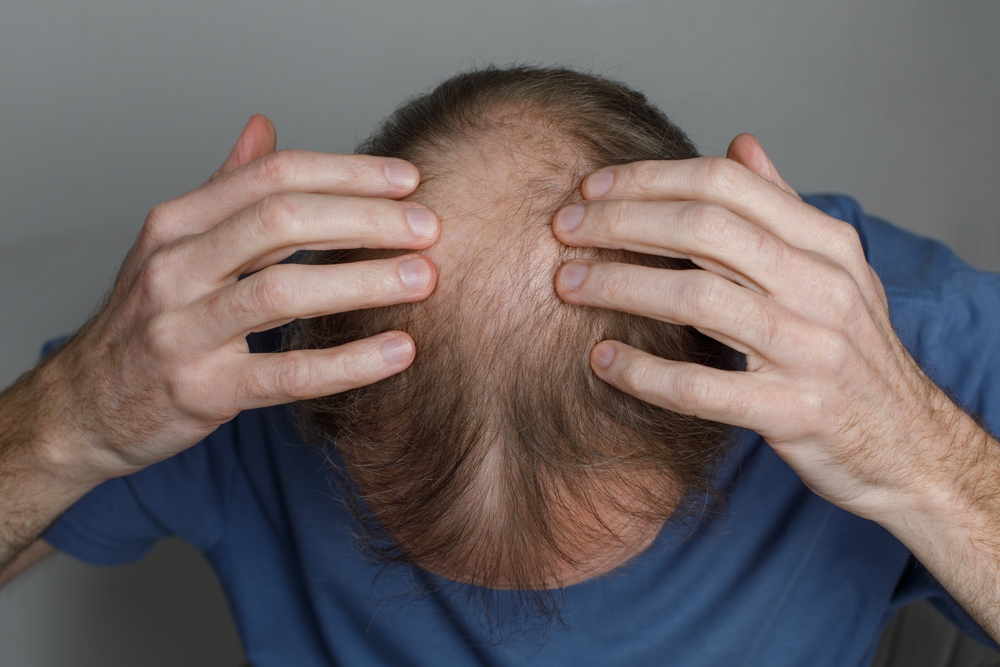
Hair loss feels personal even when it’s common. It shows up without warning and accelerates before most people recognize the pattern. The reasons vary, but the impact hits the same vulnerable place. Understanding why it happens changes the conversation from fear to control. And control matters when hair loss reshapes how someone sees themselves.
1. Genetics
Genetics drives most hair loss. Patterns repeat across generations with unnerving precision. Follicles shrink over time, producing thinner strands until they stop producing altogether. The shift can start in early adulthood or much later, but once the pattern begins, the timeline moves fast. Treatments that slow follicle shrinkage help, but they require consistency and patience.
Some people respond well to medications that support regrowth and strengthen remaining hair. Others reach a point where preserving what’s left becomes the realistic goal. Tracking changes early gives more room to act.
2. Hormonal Shifts
Hormones control growth cycles, and even small changes can trigger sudden hair loss. Thyroid disorders, menopause, pregnancy, and major shifts in estrogen or testosterone interrupt the natural growth rhythm. The shedding can feel dramatic because it often happens all at once. But the body tries to stabilize, and hair usually follows.
Addressing the underlying hormonal imbalance sets the foundation for healthier regrowth. Blood tests, regular monitoring, and targeted treatments bring clarity when symptoms blur together.
3. Stress
Stress pushes follicles into a resting phase. Weeks later, shedding starts, and the timing makes it hard to link the cause. People often assume the worst, but the pattern known as telogen effluvium usually reverses once stress declines. That doesn’t make the fallout easier to handle.
Sleep, nutrition, and controlled routines reduce the physical load that stress places on the body. Hair returns when the system resets, but the process can take months, and the waiting tests patience.
4. Nutrient Deficiencies
Hair needs fuel. When the body runs low on iron, protein, zinc, or essential vitamins, it prioritizes critical organs first, leaving follicles underpowered. The result is slow thinning that becomes noticeable only after months of deficiency. Many people overlook this because they feel fine otherwise.
A full panel of nutrient tests brings clarity. Restoring balance through food or supplements strengthens new growth and supports healthier strands. It won’t solve every case of hair loss, but it removes a common barrier.
5. Harsh Styling Habits
Heat tools, tight hairstyles, and chemical treatments strain the hair shaft and follicle. Over time, the damage compounds. Breakage shows up first, then thinning, and in severe cases, permanent loss. Traction alopecia builds slowly but leaves clear warning signs: soreness along the hairline, small bumps, and persistent thinning.
Letting hair rest sounds simple, but habits formed over the years are hard to break. Switching to low-tension styles, reducing heat, and spacing out treatments protect the follicles from ongoing strain.
6. Medical Conditions
Autoimmune disorders, scalp infections, and chronic illnesses can trigger sudden, significant hair loss. And the symptoms don’t always look dramatic at the start. Small bald patches, unusual inflammation, or rapid shedding often point to a deeper issue.
Early intervention matters. Treatments vary widely depending on the condition, but stabilizing the underlying health issue gives the follicles a chance to recover. The timeline ranges from weeks to years, depending on how quickly the body responds.
7. Medications
Several medications list hair loss as a side effect, but the connection isn’t always obvious. Blood pressure drugs, antidepressants, acne treatments, and certain hormone therapies can interrupt the growth cycle. The loss usually appears after weeks or months of use.
Adjusting dosage or switching medications often improves the situation. Never stopping a medication without medical guidance protects both health and hair.
8. Aging
Aging shifts every biological system, including the follicles. Growth slows, cycles lengthen, and density decreases. The process is universal, but the pace differs dramatically from person to person. Some individuals maintain thick hair well into later life, while others experience earlier thinning.
Supporting scalp health, improving circulation, and protecting strands from damage help counter age-related hair loss. The goal isn’t turning back time. It’s maintaining strength and volume wherever possible.
What Helps You Stay in Control
Hair loss feels unpredictable, but patterns emerge when you know what to look for. Identifying the cause gives direction and narrows the options to what actually works. Early action is the advantage most people don’t realize they have. Tracking changes, supporting follicle health, and addressing underlying issues make a real difference, especially when hair loss accelerates.
And while no single solution fits everyone, thoughtful action rebuilds confidence as the process unfolds. What approaches have helped you handle hair loss in your own life?
What to Read Next…
- These Six Haircutting Mistakes Are Causing Men To Lose Their Hair
- 7 Grooming Habits That Are Secretly Unattractive
- 8 Grooming Essentials That Are Destroying Your Skin
- 8 Reason Men Should Get Facials
- 7 Lies About Personal Hygiene That Men Believe And They Stink
The post 8 Reasons You’re Losing Your Hair And What You Can Do About It appeared first on Clever Dude Personal Finance & Money.







